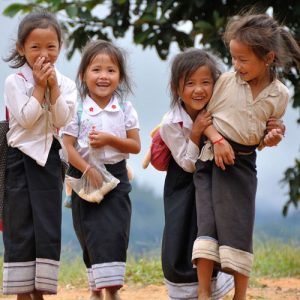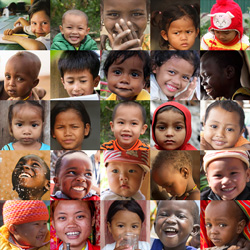This trip to Kenya has been emotional for me in many ways. Seeing children suffering from hunger and disease is something that remains with a person for a long time. Kenya also holds a special place in my heart. I was married here 30 years ago and my son was born here a few years later. Kenya is part of my family’s story; and when a member of your family hurts, you hurt.
This morning we hit the road to Kalemunyang. On the way, we drive through barren landscapes. All around are dirt fields and no signs of water. We cross large river beds that are totally dry. Herds of goats and camels, tired and emaciated, walk through parched lands in search of food and water.
Hearing that the president of ChildFund is coming, the women of Kalemunyang have gathered to welcome our arrival. As we pull in, they are surprised to see a woman president. They had been expecting a man. They are excited, and to my surprise, they pick me up and carry me on their shoulders around the community!
After things settle down, community members fill me in on ChildFund’s Food for Assets program, funded by the United Nations’ World Food Program. I’m shown to the irrigation system on the bank of the Turkwel River.
Through the Food for Assets program, ChildFund initially provides families with food and goods in exchange for their work to build irrigation systems and community gardens. Because of climate change, ChildFund is teaching pastoralist communities techniques for irrigation and how to grow gardens. We’re providing improved access to water for both humans and livestock, thereby increasing crop production, reducing environmental degradation and improving pasture for livestock. More than 20,000 people benefit from this program.
I speak to Anna, a cheery 38-year-old woman and mother of three (pictured below). She is tilling the soil and watering her crops in the “shamba”. She tells me that her situation was desperate before ChildFund offered assistance, providing gardening tools, seeds and training in crop cultivation.








